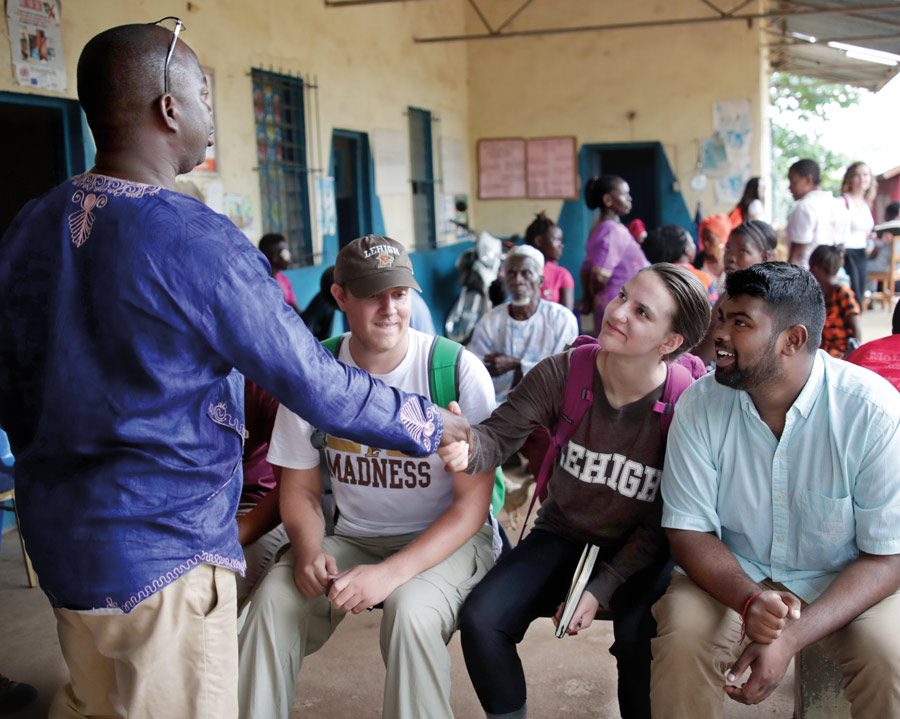 Several years ago, a Lehigh team developed a predictive model to accurately forecast Ebola outbreaks based on climate-driven bat migration. Ebola is a serious and sometimes deadly infectious disease that is zoonotic, or entersa human population via interaction with animals. It is widely believed that the source of the 2014 Ebola outbreak in West Africa, which killed more than 11,000 people, was human interaction with bats.
Several years ago, a Lehigh team developed a predictive model to accurately forecast Ebola outbreaks based on climate-driven bat migration. Ebola is a serious and sometimes deadly infectious disease that is zoonotic, or entersa human population via interaction with animals. It is widely believed that the source of the 2014 Ebola outbreak in West Africa, which killed more than 11,000 people, was human interaction with bats.
Now members of the team have examined how social and economic factors, such as level of education and general knowledge of Ebola, might contribute to “high-risk behaviors” that may bring individuals into contact with potentially infected animals. A focus on geographical locations with high concentrations of individuals at high risk could help public health officials better target prevention and education resources.
“We created a survey that combined the collection of social, demographic, and economic data with questions related to general knowledge of Ebola transmission and potentially high-risk behaviors,” says Paolo Bocchini, a professor of civil and environmental engineering and one of the study’s leaders. “Our results show that it is indeed possible to calibrate a model to predict, with a reasonable level of accuracy, the propensity of an individual to engage in high-risk behaviors.”
The results were detailed in a paper published last year in PLOS ONE. Additional authors include Lehigh doctoral student Sena Mursel and Nathaniel Alter ’22, Lindsay Slavit ’20 ’21, and Anna Smith ’22, as well as Javier Buceta, a faculty member at the Institute for Integrative Systems Biology in Valencia, Spain.
The authors say their results point to the need for a holistic approach for any model seeking to accurately predict disease outbreaks. Their findings may also be useful for population health officials, who may be able to use such models to better focus scarce resources.
“One has to look at the big picture,” says Bocchini. “We collected satellite images that showed the evolution of enviro-climatic data and combined them with ecological models and random field models to capture the spatial and temporal fluctuations of natural resources and the resulting continent-wide migrations of infected animal carriers. We also studied the human population’s social, economic, demographic, and behavioral characteristics, integrating everything to obtain our predictions.”
Only this “broad perspective and interdisciplinary approach can truly capture these dynamics,” says Bocchini. “And with this line of research, we are proving that it works.”
To collect data, Bocchini and Buceta traveled to Sierra Leone with a delegation of undergraduate students from Lehigh with support from the National Institutes of Health and Lehigh’s Office of Creative Inquiry and in collaboration with nonprofit World Hope International.
Photo: Stephanie Veto
